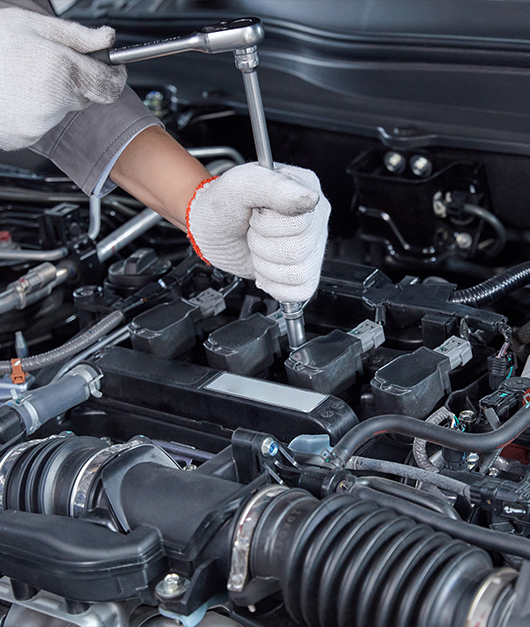- Includes a range of deep‑well sockets for recessed fasteners
- High‑torque ratchet handles enable fast loosening of stubborn bolts

- Includes a range of deep‑well sockets for recessed fasteners
- High‑torque ratchet handles enable fast loosening of stubborn bolts
|
MEAS |
G.W./N.W. |
Q’TY |
|
48.5x32.5x37.5CM |
18.9/18.4KGS |
2SETS |
Precision Manufacturing: Using high-quality materials and undergoing precision machining, our sleeve heads have excellent durability and corrosion resistance, ensuring long-term reliability.
After using the 120PCS socket set, dust and oil on the tool should be cleaned in time to prevent rust; it can be wiped with a clean cloth and then properly applied with anti-rust oil. The socket and ratchet wrench should not be exposed to a humid environment for a long time to prevent the metal parts from rusting. When storing, they should be classified by model and put back into the original packaging box to prevent bumps and losses. Do not overload during operation to avoid damage to the tool. Regularly check whether the ratchet mechanism is flexible, loose or damaged. If any abnormality is found, it should be repaired or replaced in time to ensure the safety and reliability of the tool.

Available for OEM and ODM, design based on our professional engineer team and mould factory.
We have our own machining workshop. So we can directly provide high-quality products.
Facing the challenges of heavy-duty, general-purpose, and precision applications, how has Shangyu Fuxin secured the core positions in the annual Deep Socket Wrench Tool rankings? This article reveals ...
READ MOREThe 121PCS COMPLETE SOCKET SET (1/4"&1/2"&3/8") is a versatile, travel-friendly toolkit designed to meet the diverse needs of automotive professionals, industrial technicians, and DIY hobbyist...
READ MOREThe 10PCS HAND DRIVE SOCKET SET (1/2") is designed to provide convenience, precision, and versatility for a wide range of repair and maintenance tasks. Combining deep sockets, a durable ratchet handle...
READ MOREHow sockets and wrenches are connected
The way sockets and wrenches are connected mainly depends on the type and design of the wrench. Here are a few common ways to connect:
1. Direct insertion: Some wrenches are designed with a built-in socket interface that can be directly inserted into the socket without additional accessories.
2. Adapter: If the wrench does not have a built-in socket interface, an adapter can be used to connect the socket to the wrench. Adapters usually come in multiple sizes to accommodate sockets of different sizes.
3. Quick release system: Some advanced tool sets come with a quick release system that allows users to quickly change sockets without using other tools. This system usually includes an interface with a spring clip that can easily lock or release the socket.
4. Ratchet system: Ratchet wrenches are usually used with sockets. The ratchet mechanism can quickly rotate the socket to improve work efficiency.
5. Extension rod: When you need to reach hard-to-reach areas, you can use an extension rod to connect the socket and wrench to increase leverage.
Cost-effectiveness of investing in a high-quality tool set
Investing in a high-quality tool set is often cost-effective in the long run for the following reasons:
Durability: High-quality tools are often made of better materials and manufacturing processes, so they are more durable and can withstand more frequent and intensive use.
Maintenance costs: High-quality tools require less maintenance, reducing long-term maintenance costs.
Efficiency: High-quality tools are often more reasonably designed and more comfortable to use, which can increase work efficiency.
Retention of value: High-quality tools depreciate more slowly, and they usually retain their value higher if they need to be sold or replaced.
The effects of long-term tool use on health
The following effects may occur in the long-term use of tools:
1. Musculoskeletal problems: Long-term use of tools may cause muscle fatigue, joint pain, and repetitive strain injuries, such as carpal tunnel syndrome.
2. Vibration injuries: When using power tools, vibrations may cause damage to nerves and blood vessels in the hands and arms.
3. Hearing damage: Working in a high-noise environment for a long time may cause hearing loss or tinnitus.
4. Respiratory problems: Some tools may produce harmful dust or gases during use, and long-term exposure may cause damage to the respiratory system.
5. Skin problems: Contact with certain tool materials or cleaning agents may cause skin allergies or irritation.
To reduce these health risks, appropriate precautions are recommended, such as using ergonomic tools, wearing protective gear, taking regular breaks and proper workplace ventilation.